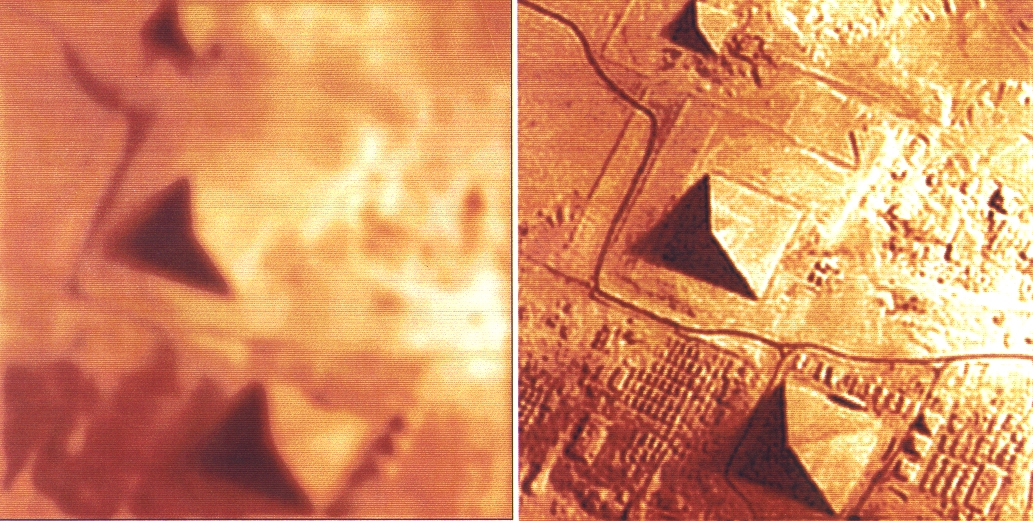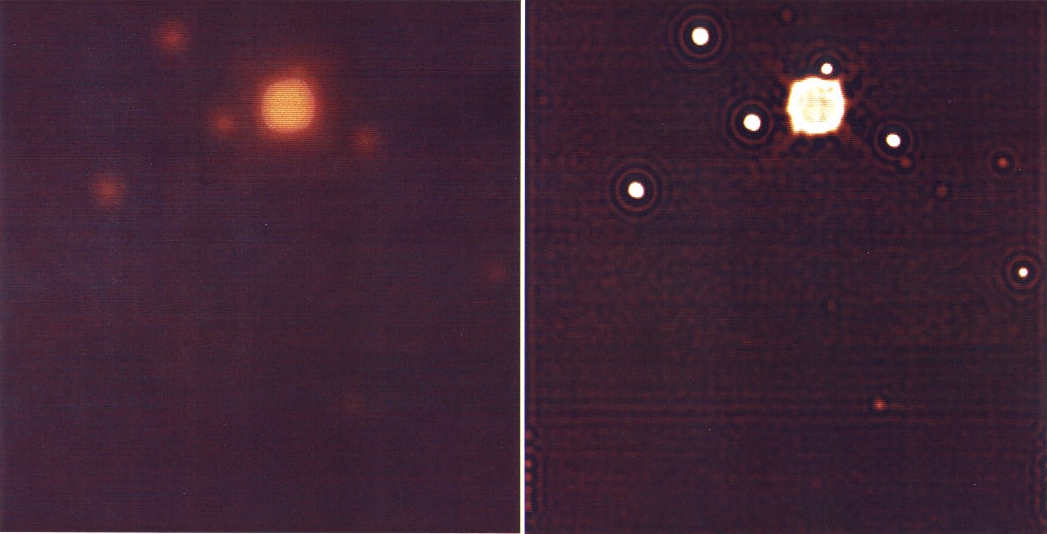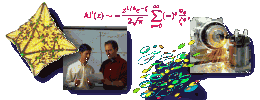New Efficient Approach to Blind Deconvolution of Images Discovered
March 2000
 |
| Blurred image of pyramids (left) and reconstructed image (right). |
A mathematician in ITL's Mathematical and Computational Sciences Division
has developed a powerful new technique for blind deconvolution of images.
Blind deconvolution seeks to deblur an image without knowing the cause of
the blur. This is of considerable interest in numerous medical, industrial,
scientific, and military applications. The mathematical problem is very
difficult and not fully understood. So far, most approaches to blind
deconvolution have been iterative in nature. However, the iterative
approach is generally ill-behaved, often developing stagnation points or
diverging altogether. When the iterative process is stable, a large number
of iterations, and several hours of computation, may be necessary to resolve
fine detail.
In a recently completed research paper, Alfred Carasso has developed a novel
approach to that problem that is non-iterative in nature. The method does
not attempt to solve the blind deconvolution problem in full generality.
Instead, attention is focused on a wide class of blurs that includes and
generalizes Gaussian and Lorentzian distributions, and has significant
applications. This is the class G. Likewise, a large class of sharp images is
exhibited and characterized in terms of its behavior in the Fourier domain.
This is the class W. It is shown how 1-D Fourier analysis of blurred image
data can be used to detect class G point spread functions acting on class
W images. This approach is based on empirical observations about the class
W that have not previously been exploited in the literature. A separate
image deblurring technique uses this detected point spread function to
deblur the image. Each of these steps uses direct (non-iterative) methods.
Although the new technique does require interactive adjustment of parameters,
it still enables blind deblurring of 512x512 images in only minutes
of CPU time on current desktop workstations.
Analysis of the blind deconvolution problem within the class G has already
produced a number of interesting and unexpected results. Current research
seeks to extend this approach to a wider class of blurs, in particular,
out of focus blurs.
This work has already garnered considerable interest in the research community.
Invited talks on this work have been or shortly will be presented at UCLA,
Stanford, NIST, the Institute for Defense Analyses, the Johns Hopkins Medical
School, the University of Maryland, and the Courant Institute of Mathematical
Sciences of New York University. Further talks are planned at NIST-Boulder
and other US Government Laboratories.
 |
| Blurred image of Uranus (left) and reconstructed image (right). |
|




